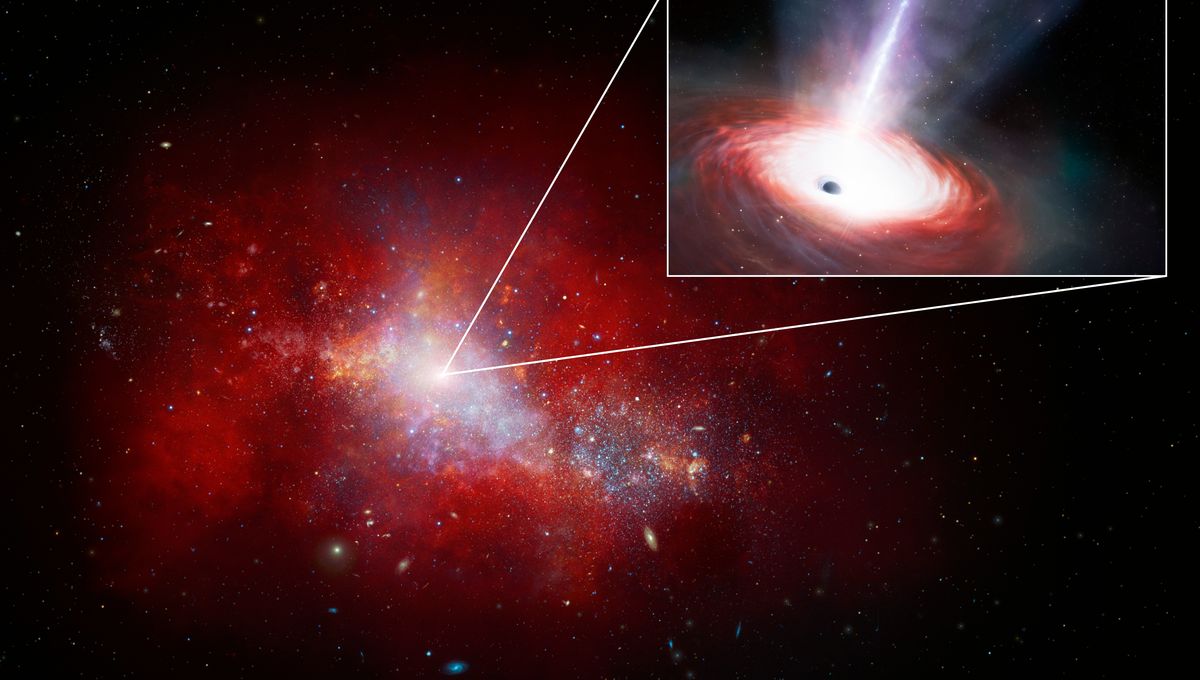
A small supermassive black hole from the early universe is showing just how incredible these objects can end up being. It is feeding on surrounding gas at an exceptional rate, and possibly suggesting how supermassive black holes grow to their impressive size in a brief amount of time.
The light from this object has traveled all the way from a time 1.5 billion years after the Big Bang. Earlier supermassive black holes have been discovered – but none of them can hold a candle to this one. It is by far the fastest accreting black hole in the period of the cosmos, and it was discovered thanks to JWST.
“Owing to its faint nature, the detection of LID-568 would be impossible without JWST. Using the integral field spectrograph was innovative and necessary for getting our observation,” co-author Emanuele Farina, International Gemini Observatory/NSF NOIRLab astronomer, said in a statement.
The black hole is called LID-568 and it is feeding on matter at 40 times its Eddington limit. This limit doesn’t really work for black holes, but it continues to be used – basically, it is the value where the luminosity of an object is balanced against the gravitational pull. If a star was shining beyond this limit, it would pull itself apart because the light would be pushing the plasma away.
Supermassive black holes and other objects can, for a (cosmically) short period, far exceed the Eddington limit, creating an incredible display of light while still pulling in material. In the case of LID-568, this is among the highest known.
“This black hole is having a feast,” said International Gemini Observatory/NSF NOIRLab astronomer and co-author Julia Scharwächter. “This extreme case shows that a fast-feeding mechanism above the Eddington limit is one of the possible explanations for why we see these very heavy black holes so early in the Universe.”
The formation of supermassive black holes so early in the universe is still a matter of debate. They might have formed from the explosion of really massive stars or from the direct collapse of enormous gas clouds – known respectively as the light seed versus heavy seed scenario. The discovery of LID-568 with a mass of 7.2 million times that of the Sun shows that these cosmic objects can actually gain weight at an impressive speed.
“The discovery of a super-Eddington accreting black hole suggests that a significant portion of mass growth can occur during a single episode of rapid feeding, regardless of whether the black hole originated from a light or heavy seed,” lead author Hyewon Suh, also from the International Gemini Observatory/NSF NOIRLab, explained. “This serendipitous result added a new dimension to our understanding of the system and opened up exciting avenues for investigation.”
The study is published in the journal Nature Astronomy.
Source Link: Fastest-Feeding Black Hole In The Early Universe Found 1.5 Billion Years After The Big Bang